Discover the growth rates of various boxwood varieties. Learn about slow, medium, and fast-growing boxwoods to choose the perfect option for your landscape. Expert tips included.
Boxwood growth rates vary significantly among different varieties. Slow-growing types like ‘Green Velvet’ and ‘Suffruticosa’ grow 1-3 inches per year. Medium-growth varieties such as ‘Green Mountain’ and ‘Winter Gem’ grow 3-6 inches annually. Fast-growing boxwoods like ‘Green Beauty’ and ‘Fastigiata’ can grow 6-12 inches per year.
As a horticulturist with over two decades of experience cultivating and studying boxwoods, I’m excited to share my knowledge about the growth rates of these versatile evergreen shrubs. Understanding the growth rates of different boxwood varieties is crucial for successful landscape planning and maintenance.
Understanding Boxwood Growth Rates
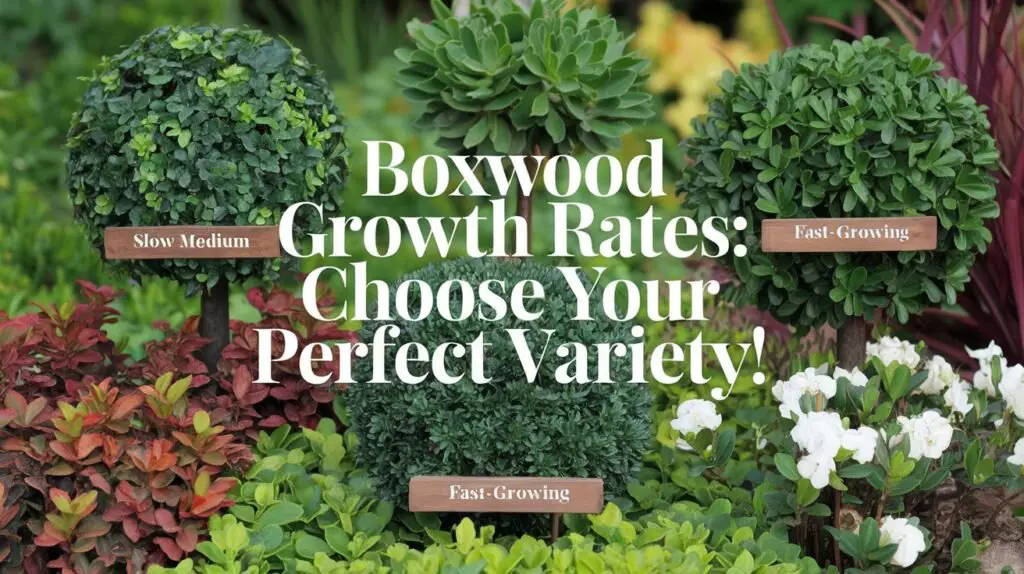
Factors Affecting Boxwood Growth
Environmental Factors:
- Sunlight exposure
- Soil quality and pH
- Water availability
- Climate and temperature
Care and Maintenance:
- Pruning practices
- Fertilization
- Disease and pest management
For more detailed information on boxwood care, visit the American Boxwood Society.
Categorizing Boxwood Growth Rates
Slow-Growing Boxwoods (1-3 inches per year)
Medium-Growing Boxwoods (3-6 inches per year)
Fast-Growing Boxwoods (6-12 inches per year)
Slow-Growing Boxwood Varieties
‘Suffruticosa’ (English Boxwood)
Growth Rate:
- 1-2 inches per year
Characteristics:
- Dense, compact growth
- Small, dark green leaves
- Ideal for formal hedges and borders
‘Green Velvet’
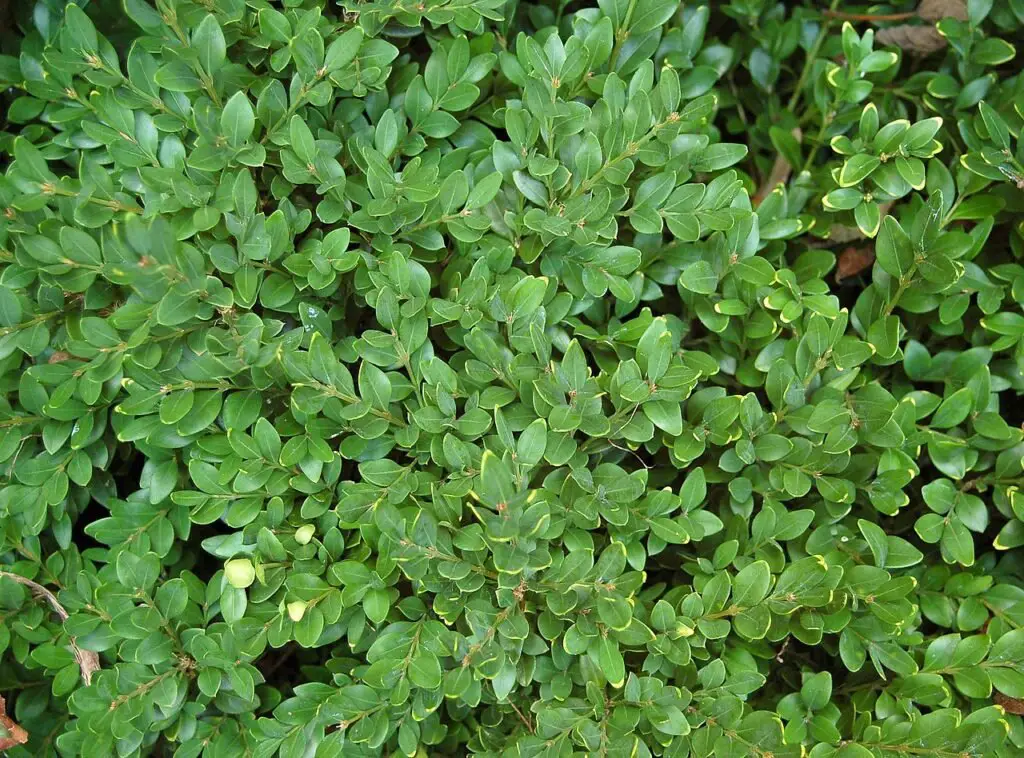
Growth Rate:
- 2-3 inches per year
Characteristics:
- Rounded shape
- Bright green foliage
- Excellent cold hardiness
Medium-Growing Boxwood Varieties
‘Green Mountain’
Growth Rate:
- 4-6 inches per year
Characteristics:
- Upright, conical shape
- Dark green leaves
- Good resistance to winter burn
‘Winter Gem’
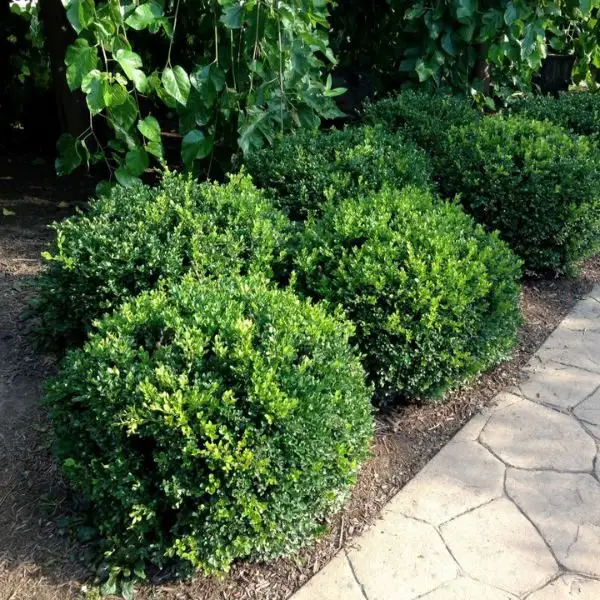
Growth Rate:
- 3-4 inches per year
Characteristics:
- Compact, rounded form
- Bright green summer foliage
- Bronze tint in winter
Fast-Growing Boxwood Varieties
‘Green Beauty’
Growth Rate:
- 6-8 inches per year
Characteristics:
- Upright, oval shape
- Deep green foliage
- Heat and drought tolerant
‘Fastigiata’ (Columnar Boxwood)

Growth Rate:
- 8-12 inches per year
Characteristics:
- Tall, narrow growth habit
- Dark green leaves
- Ideal for creating vertical accents
Choosing the Right Boxwood for Your Landscape

Considerations for Selection:
Landscape Purpose:
- Hedges
- Topiaries
- Foundation plantings
- Accent plants
Maintenance Requirements:
- Pruning frequency
- Fertilization needs
- Pest and disease susceptibility
Climate Adaptation:
- Cold hardiness
- Heat tolerance
- Drought resistance
Boxwood Blight Tolerance and Leafminer Resistance by Cultivar (Table)
| Cultivar | Boxwood Blight Tolerance | Leafminer Resistance |
|---|---|---|
| Buxus sempervirens | Moderate | Low |
| Buxus microphylla | High | Moderate |
| Buxus sinica | High | High |
| Buxus ‘Green Mountain’ | Moderate | Moderate |
| Buxus ‘Green Velvet’ | High | Moderate |
| Buxus ‘Winter Gem’ | High | Moderate |
| Buxus ‘Sempervirens Suffruticosa’ | Low | Low |
| Buxus ‘Franklin’s Gem’ | High | High |
| Buxus ‘Vardar Valley’ | High | Moderate |
Notes:
- Boxwood Bligh
- Leafminer Resistance refers to the cultivar’s ability to resist damage from the boxwood leafminer (Monarthropalpus flavus).
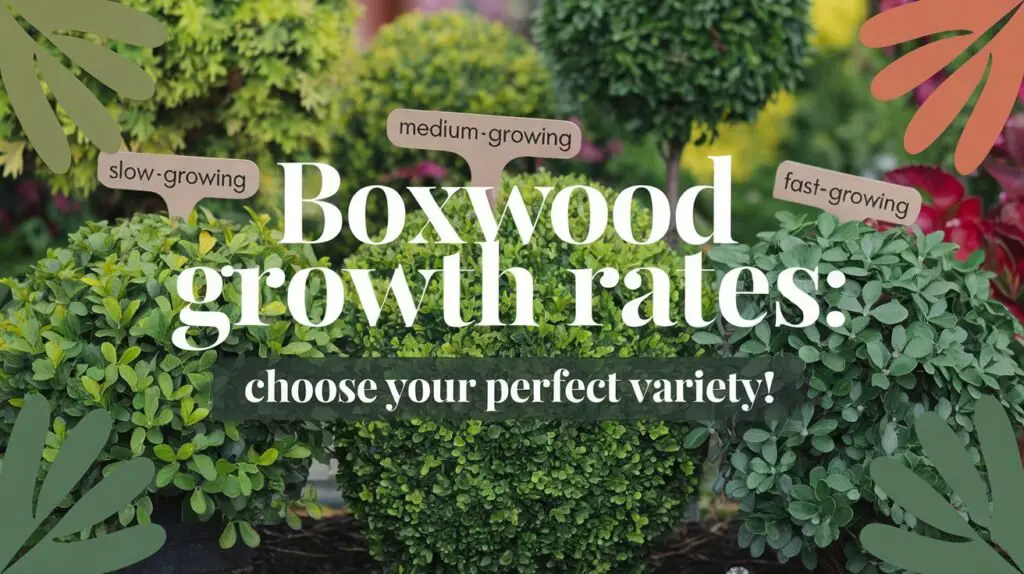
Boxwood Specimen comparison
| Specimen | Growth Habit | Height/Width | Foliage Color | Uses |
|---|
| Buxus sempervirens | Dense, rounded | 3-10 ft / 3-4 ft | Dark green | Hedges, topiary, foundation plantings |
| Buxus microphylla | Compact, bushy | 2-3 ft / 2-3 ft | Glossy green | Low hedges, borders, and container planting |
| Buxus sinica | Rounded, upright | 4-6 ft / 3-4 ft | Dark green | Hedges, screens, and accents |
| Buxus ‘Green Mountain’ | Pyramidal, upright | 3-5 ft / 2-3 ft | Bright green | Formal hedges, topiary, and borders |
| Buxus ‘Green Velvet’ | Compact, mounded | 2-3 ft / 3-4 ft | Dark green | Low hedges, edging, and mass plantings |
| Buxus ‘Winter Gem’ | Rounded, dense | 2-3 ft / 2-3 ft | Light green | Foundation plantings, hedges |
| Buxus ‘Franklin’s Gem’ | Compact, low-growing | 1-2 ft / 2-3 ft | Dark green | Ground cover, low borders |
| Buxus ‘Vardar Valley’ | Upright, narrow | 3-4 ft / 2-3 ft | Bright green | Hedges, screens, and formal gardens |
Key Points:
- Growth Habit: Describes the overall shape and form of the boxwood.
- Height/Width: Provides an estimate of the typical dimensions of the specimen.
- Foliage Color: Indicates the color of the leaves, which can affect landscape design.
- Uses: Common applications for each cultivar in landscaping.
Care Tips for Optimal Boxwood Growth
Planting and Soil Preparation
Soil Requirements:
- Well-draining soil
- pH between 6.5 and 7.5
- Rich in organic matter
Planting Tips:
- Plant at the same depth as the container
- Space according to mature size
- Water thoroughly after planting
For additional guidance on soil preparation, check out this guide from the University of Maryland Extension.
Watering and Fertilization
Watering Guidelines:
- Keep soil consistently moist but not waterlogged
- Water deeply and less frequently
- Use mulch to retain moisture
Fertilization:
- Apply slow-release fertilizer in spring
- Avoid over-fertilization
- Use balanced, nitrogen-rich formula
Pruning and Shaping
Pruning Techniques:
- Light pruning in late spring or early summer
- Heavy pruning in late winter or early spring
- Avoid pruning in late fall
Shaping Tips:
- Maintain desired shape with regular trimming
- Allow for natural growth pattern when possible
- Use sharp, clean tools to prevent damage
Common Boxwood Growth Issues
Pest Problems:
Boxwood Leafminer:
- Symptoms: Blistered or discolored leaves
- Treatment: Systemic insecticides or neem oil
Boxwood Mite:
- Symptoms: Bronzing or stippling of leaves
- Treatment: Miticides or horticultural oils
Disease Concerns:
Boxwood Blight:
- Symptoms: Leaf spots, stem cankers, defoliation
- Prevention: Good air circulation, avoid overhead watering
Root Rot:
- Symptoms: Yellowing leaves, stunted growth
- Prevention: Well-draining soil, avoid overwatering
Understanding the growth rates of different boxwood varieties is essential for creating and maintaining a beautiful, well-planned landscape. Whether you choose slow-growing varieties for formal hedges, medium-growing types for general landscaping, or fast-growing boxwoods for quick privacy screens, each has its unique benefits and care requirements.
Remember that while growth rates are important, factors like climate adaptation, maintenance needs, and aesthetic preferences should also guide your selection. With proper care and attention, boxwoods can be long-lived, attractive additions to any garden or landscape.
For more in-depth information on boxwood varieties and their characteristics, visit the United States National Arboretum.
By considering the information provided in this guide, you can select the boxwood variety that best suits your landscape goals and growing conditions. Happy gardening!
For more gardening tips and plant care guides, visit usagardenhub.com.

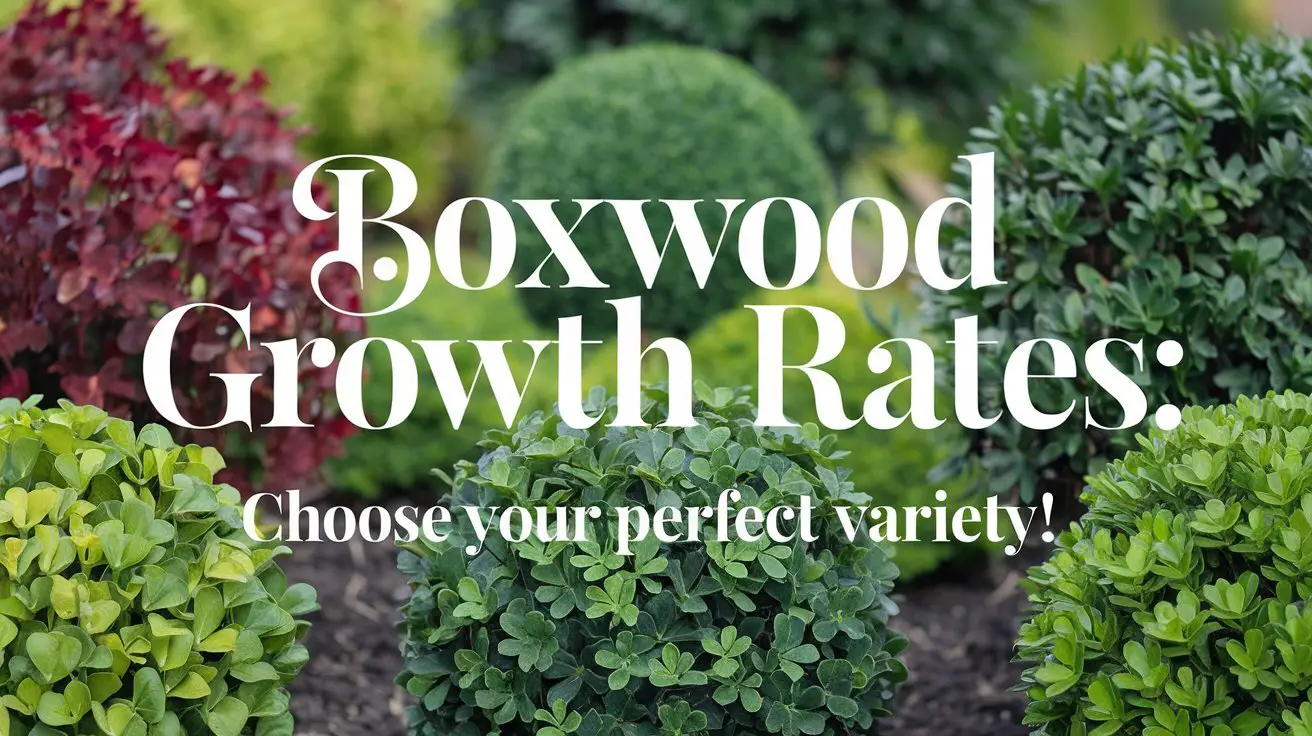
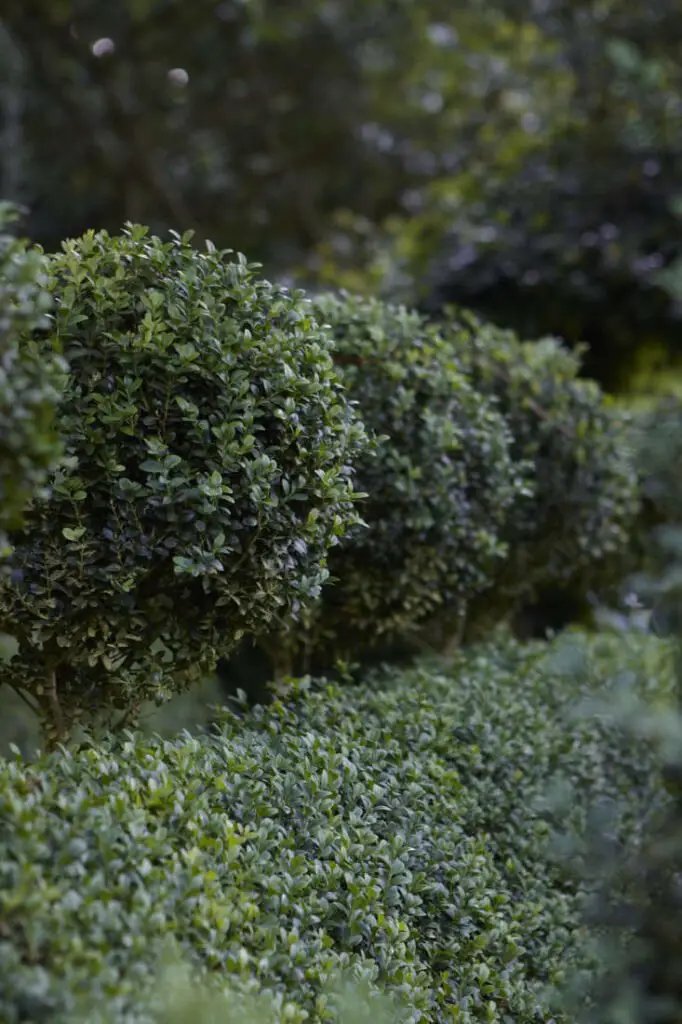
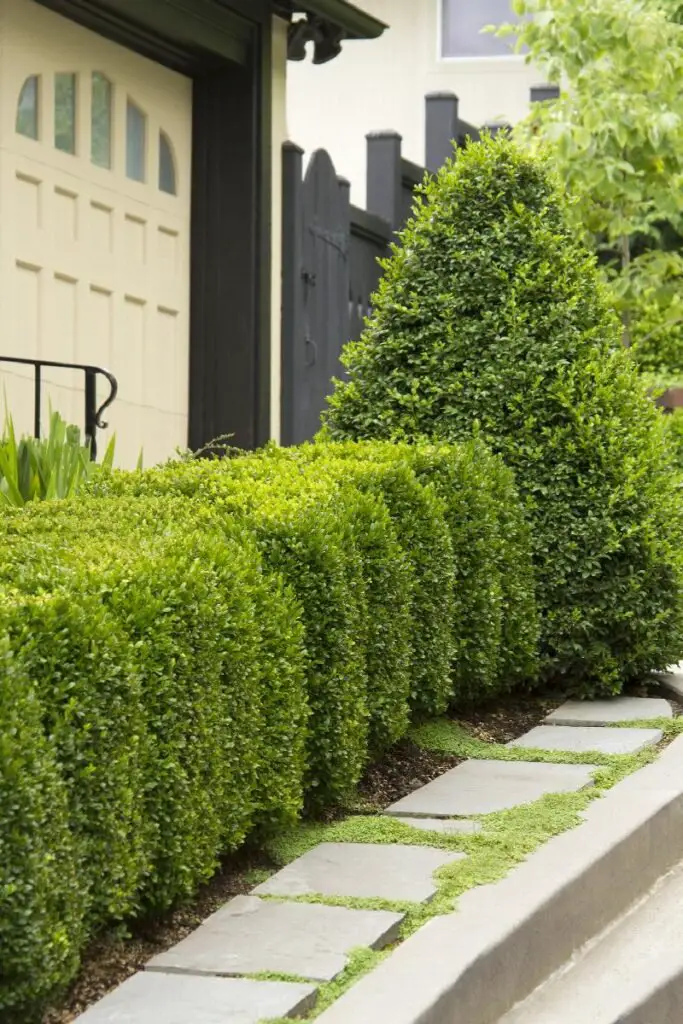

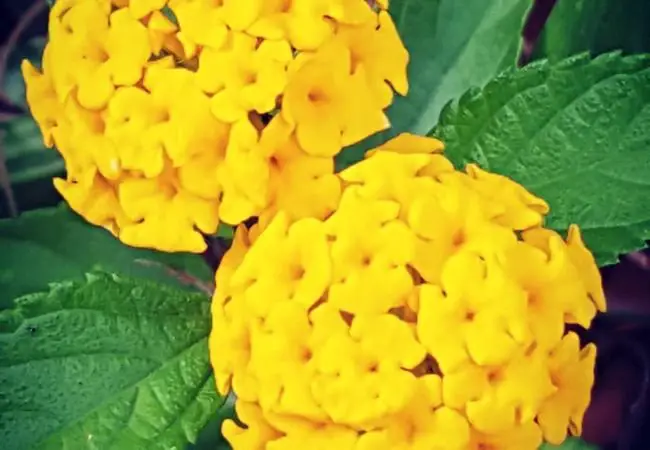



2 Comments on “Boxwood Growth Rates: A Comprehensive Guide to Different Varieties”